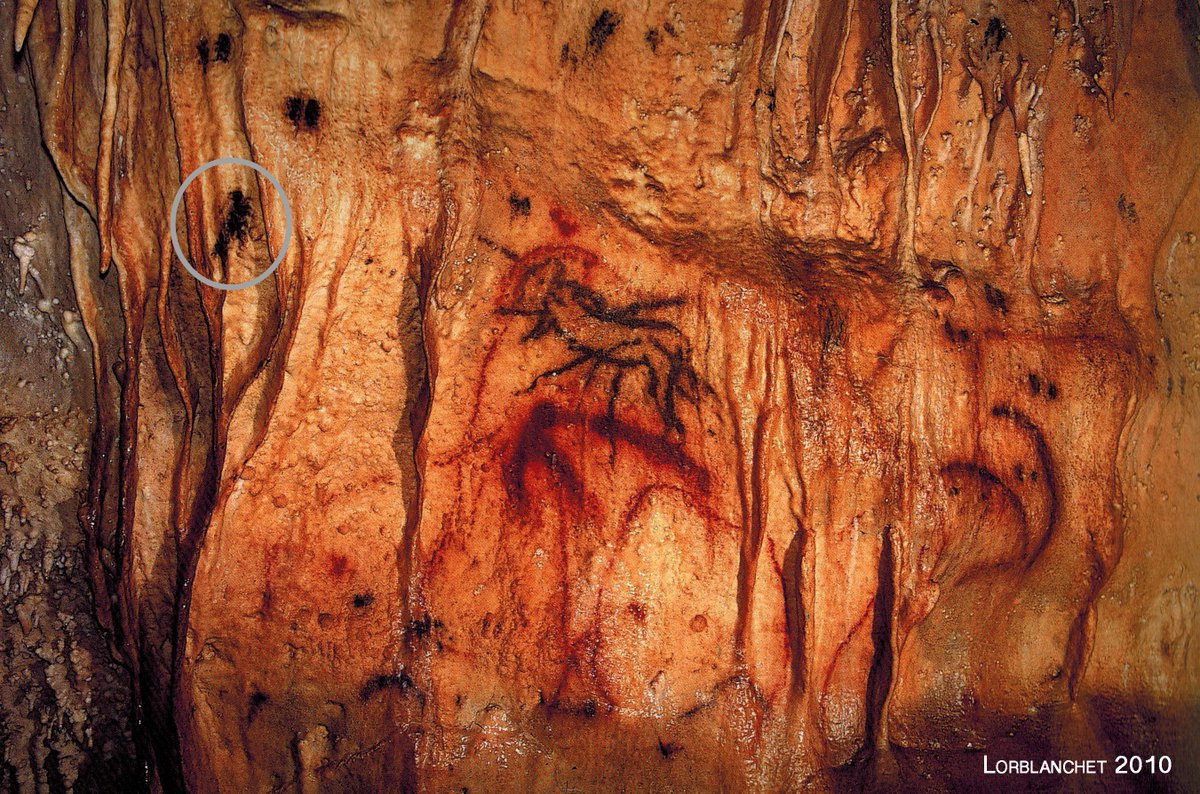
Hi friends! 👋🏽 This #FridayPaleoArt we will move away from the rainy lands of the north to visit an extraordinary cave in the south 🌞
Cave: #Navarro
Place: Málaga (Spain)
Motif: ideomorphs
Chronology: Pre-Magdalenian
Cave: #Navarro
Place: Málaga (Spain)
Motif: ideomorphs
Chronology: Pre-Magdalenian

We refer to the Cueva de Navarro, located in the province of Malaga (Andalusia, Spain), in the extreme south of Europe.
The cave was discovered by chance in 1979, when its galleries were intercepted by the Navarro Quarry front, and it was published for the first time in 1981 by José Luis Sanchidrián 📖🔎.
Although the original entrance is covered today, however, we can access the cave through an artificial mouth that gives access to a network of narrow galleries that lead to the sector with cave paintings. 

The parietal art is mainly concentrated in a small room. The motifs are very abundant and repetitive, made in red and black paints 🔴⚫️.
The main themes are the signs, since there is only one animal figure (aurochs) 🐃 occupying the center of the composition. 

Of the approx. 150 ideomorphs highlight the combinations of points, rectilinear lines and complex semicircular signs similar to those found in the Cueva de La Pileta. The pictorial repertoire is completed with numerous spots on speleothems and rocky pebbles👇🏽 

Shortly, we hope to start the re-study of this cavity, through the project: “Oscuridad e identidad. Estudio interdisciplinar y holístico de cuevas con arte paleolítico análogo de Navarro (Málaga) y Los Márquez (Jerez de la Frontera, Cádiz)”, directed by @MMedinaAlcaide 👏🏼
We hope you found it interesting!
End of thread!
#JoséLuisSanchidrián
@EuropeanRockArt @IceAgeEurope @AndaluciaJunta
End of thread!
#JoséLuisSanchidrián
@EuropeanRockArt @IceAgeEurope @AndaluciaJunta
• • •
Missing some Tweet in this thread? You can try to
force a refresh


















